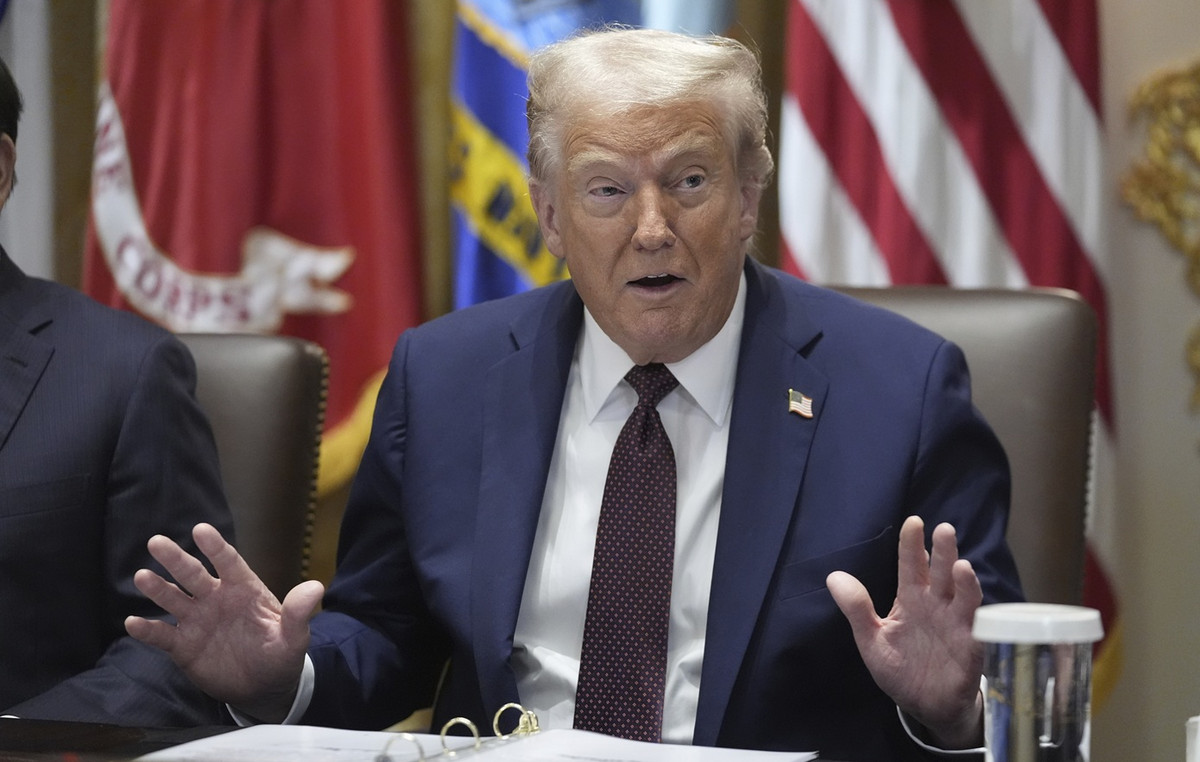Protagonists of a new armed conflict in Europe, the Russia and the Ukraine have economies associated with the export of commodities. In the case of the Russians, the energy ones, and in the case of the Ukrainians, the agricultural ones. But the complexity of these economies goes further — with similarities and differences.
The main difference is in size. Russia is the 11th largest economy in the world, according to data from the International Monetary Fund (IMF) of 2020, while Ukraine is 55th.
Furthermore, the Russian economy, a great heir to the old Soviet Unionis more developed than Ukraine, which is still considered a developing country.
Even so, the countries have similarities in the main products and trading partners, and also have an intense commercial relationship that has been losing strength due to the scenario that culminated in the Russia’s invasion of the country.
Ukraine: granary of Europe
Vinicius Teixeira, a professor at the State University of Mato Grosso (Unemat), says that the Ukrainian economy is a developing country, but more diversified in terms of areas of activity than the average.
Even so, its base is still focused on ores and agricultural products. “Ukraine is a major exporter of grains such as wheat, corn and barley. Another part of the country produces heavy machinery and defense material,” she says.
The “roots” of this division come from the period when the country was one of the republics of the Soviet Union, acting as a “workshop” for the bloc and concentrating a large number of factories.
“When Ukraine gained its independence, Ukraine had these industries, locomotives, ship engines, power generators, but they are very specific, difficult to export, and the biggest buyer is Russia, which is even dependent on the country to a certain degree. ”, says Teixeira.
As relations between the countries deteriorated, particularly with the annexation of the Crimean Peninsula in 2014, Ukrainian exports fell, with the country unable to find new consumers. Debt and trade deficit began to rise.
At the same time, the country has one of the most fertile soils in the world, the so-called “black soil”, which is rich in humus. “Since Soviet times, Ukraine has been considered a granary for the production of various grains, in addition to potatoes and also having an important milk and dairy production”, says the president of the Brazil-Russia Chamber, Gilberto Ramos.
A good part of this, explains the executive, is what helps to supply the countries of the European Union. “Ukraine has enormous relevance for the European community, which is today its main trading partner, in addition to Russia itself.”
The region of eastern Ukraine, which concentrates separatist movements supported by Russia, is known for its large presence of industry and mining of coalan important product on Ukraine’s trade agenda.
Russia: energy and industrial power
On the other hand, Russia is characterized, according to Teixeira, as a “more developed and much more complex” country. The main source of export earnings is still in commodities, especially energy. The country is one of the largest oil producers and has the largest gas reserves in the world, supplying more than 40% of all European demand for the product.
The diversification of the economy came through industries such as automotive and defense. This gives Russia, according to experts, a profile of production and exports reasonably balanced between basic products on the one hand, such as fuels, agricultural items and minerals, and industrial goods with high added value on the other.
“Russia has a strong industry of capital goods and heavy equipment, in addition to having a great development in the area of technology, such as the blockchain industry, startups and incubators”, says Ramos.
He also recalls the Russian importance in supplying fertilizers to the rest of the world — including Brazil, which imports a large part of the products that support its crops from there.
“Russia is a major supplier of nitrogen, potassium chloride and urea, hence the need for Brazil to maintain it as a major strategic partner,” he says.
Information
war impacts
With the military conflict, Teixeira, from Unemat, believes that Ukraine should have the greatest economic impacts, as it is the stage of the clash. “Agricultural production will probably drop significantly between this year and next. Industries must be the most affected, because in war, the defense industry, which is important, must become the target of attacks.”
He also claims that Russian efforts to block Ukrainian airspace and access to ports should impede the country’s imports and exports, generating a “much higher and lasting cost than in Russia”.
In the Russian case, he says that the main economic impact must come from the sanctions promised by the United States and European countries. Even so, he considers that “they are not very effective in the medium and long term because Russia can find other ways to develop”.
“Russia is heir to a country that has always known how to live with sanctions, and it has had several. They impact in the short term, but it can realign and reorient to get out of these alleys,” she says.
Teixeira notes that Russia was already showing signs that it was prepared to deal with possible sanctions, increasing its foreign exchange reserves and signing agreements with the China —important consumer of its arms industry— to support exports, which should reduce the effects of sanctions.
Business partners
According to the Observatory of Economic Complexity, in 2019 Russia totaled US$ 407 billion in exportsand US$ 238 billion in imports. That year, it was the largest exporter of wheat, semi-finished steel, tar oil, nickel and nitrogen fertilizers.
The largest exports were crude oil, refined oil, natural gas, coal and wheat, with the main destinations being, respectively, China, the Netherlands, Belarus, Germany and Italy.
The main imports were cars, medicines, vehicle parts, telecommunication equipment and aircraft and helicopters. The biggest sellers were China, Germany, Belarus, the United States and Italy.
In the same year, Ukraine exported US$49.5 billion worth of products and imported US$55.4 billion. The main products exported were corn, seed oils, iron ore, wheat and semi-finished steel, destined for Russia, China, Germany, Poland and Italy.
In terms of imports, the main products were refined oil, cars, medicines, coal and natural gas. The biggest sellers were China, Russia, Germany, Poland and Belarus.
Specifically with Brazil, the two countries are far from their main trading partners. In 2021, exports to Russia amounted to US$ 1.587 billion, while to Ukraine they were US$ 226 million.
The main Brazilian products exported to Russia were soy, coffee, chicken, sugar, peanuts, beef and ferro-niobium. For Ukraine, it was peanuts, bauxite, sugar, coffee, sprayers, soy and tobacco.
In the same year, imports from Russia totaled US$ 5.698 billion, and from Ukraine, US$ 211 million. The main Russian products imported were chemical components for the production of fertilizers, manures, semi-manufactured products of iron or steel and aluminum.
From Ukraine, they were iron, products for the production of fertilizers, medicines containing insulin and devices for making coffee or tea.
Source: CNN Brasil
I am Sophia william, author of World Stock Market. I have a degree in journalism from the University of Missouri and I have worked as a reporter for several news websites. I have a passion for writing and informing people about the latest news and events happening in the world. I strive to be accurate and unbiased in my reporting, and I hope to provide readers with valuable information that they can use to make informed decisions.







